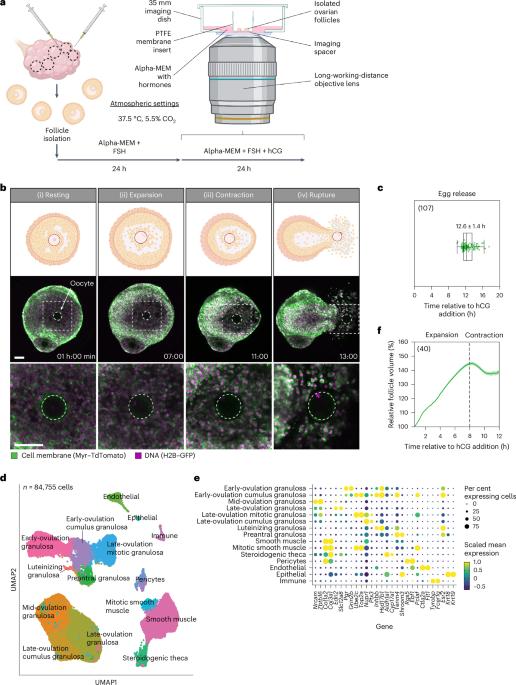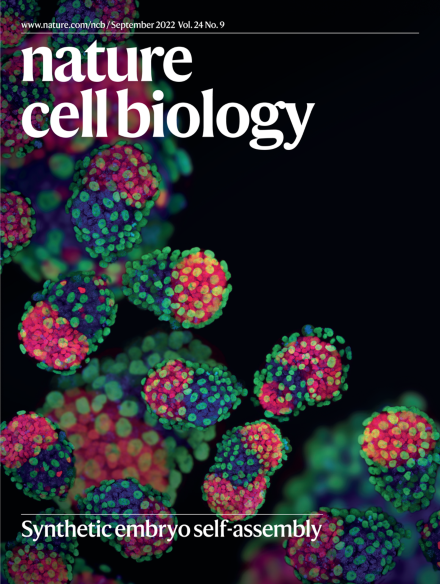体外成像揭示排卵的时空控制
IF 17.3
1区 生物学
Q1 CELL BIOLOGY
引用次数: 0
摘要
排卵时,卵子从卵泡中排出,准备受精。排卵发生在体内,阻碍了对其进展的直接研究。因此,控制排卵的确切机制仍不清楚。在这里,我们设计了活体成像方法来研究离体小鼠卵泡排卵的整个过程。我们发现排卵过程经历了三个不同的阶段:卵泡扩张(I)、收缩(II)和破裂(III),最终卵子排出。卵泡扩张是由透明质酸分泌和渗透梯度引导的液体流入卵泡驱动的。然后,卵泡外层的平滑肌细胞驱动卵泡收缩。卵泡破裂始于柱头形成,随后卵泡液和积液细胞流出,卵子迅速排出。这些结果为排卵这一对生殖至关重要的过程建立了一个机制框架。本文章由计算机程序翻译,如有差异,请以英文原文为准。


Ex vivo imaging reveals the spatiotemporal control of ovulation
During ovulation, an egg is released from an ovarian follicle, ready for fertilization. Ovulation occurs inside the body, impeding direct studies of its progression. Therefore, the exact mechanisms that control ovulation have remained unclear. Here we devised live imaging methods to study the entire process of ovulation in isolated mouse ovarian follicles. We show that ovulation proceeds through three distinct phases, follicle expansion (I), contraction (II) and rupture (III), culminating in the release of the egg. Follicle expansion is driven by hyaluronic acid secretion and an osmotic gradient-directed fluid influx into the follicle. Then, smooth muscle cells in the outer follicle drive follicle contraction. Follicle rupture begins with stigma formation, followed by the exit of follicular fluid and cumulus cells and the rapid release of the egg. These results establish a mechanistic framework for ovulation, a process of fundamental importance for reproduction. Thomas, Marx et al. devise a live imaging approach to spatiotemporally dissect mouse ovulation ex vivo.
求助全文
通过发布文献求助,成功后即可免费获取论文全文。
去求助
来源期刊

Nature Cell Biology
生物-细胞生物学
CiteScore
28.40
自引率
0.90%
发文量
219
审稿时长
3 months
期刊介绍:
Nature Cell Biology, a prestigious journal, upholds a commitment to publishing papers of the highest quality across all areas of cell biology, with a particular focus on elucidating mechanisms underlying fundamental cell biological processes. The journal's broad scope encompasses various areas of interest, including but not limited to:
-Autophagy
-Cancer biology
-Cell adhesion and migration
-Cell cycle and growth
-Cell death
-Chromatin and epigenetics
-Cytoskeletal dynamics
-Developmental biology
-DNA replication and repair
-Mechanisms of human disease
-Mechanobiology
-Membrane traffic and dynamics
-Metabolism
-Nuclear organization and dynamics
-Organelle biology
-Proteolysis and quality control
-RNA biology
-Signal transduction
-Stem cell biology
 求助内容:
求助内容: 应助结果提醒方式:
应助结果提醒方式:


